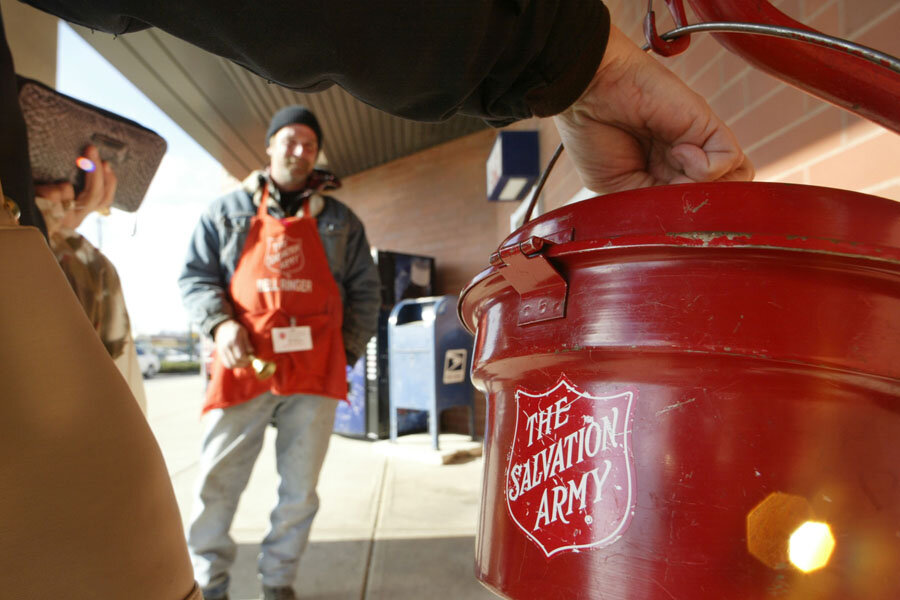US poor and middle class give more to charity, but wealthy pull back
Loading...
What makes Americans more likely to give to charity?
Poorer and middle-class Americans are more likely to donate than are the wealthiest people in the country, according to a report released Monday by The Chronicle of Philanthropy.
Americans give an average of about 3 percent of their income to charity, according to the study. But in recent years, Americans in different income brackets have diverged on the giving scale. Between 2006 and 2012, Americans earning $200,000 or more decreased the amount they gave to charity by 4.6 percent. In that same period, Americans earning less than $100,000 increased the amount they gave by 4.5 percent. And that increase was despite the fact that middle- and lower-income Americans were earning less than they did six years earlier, the report notes.
Using IRS information, the report looked at charitable gifts that were claimed as itemized deductions. So, is there a unifying factor for high charitable donations? According to the report, the top 17 most generous states all voted for Mitt Romney in the 2012 presidential election. The most generous state was Utah, which has a giving rate of about 6.6 percent. That state was followed by Mississippi, Alabama, Tennessee, and Georgia.
Church attendance also factored into people's likeliness to donate, says Chronicle editor Stacy Palmer. In Utah, for example, residents donated $65.60 to charity for every $1,000 they earned. Utah has a Mormon population of 62.2 percent, according to 2012 Census data. The Mormon Church requires members to give at least 10 percent of their annual income to charity.
Low levels of charitable giving in some states – New Hampshire having the lowest rate at 1.7 percent – could be attributed to low levels of church attendance, Ms. Palmer adds. The report did not examine giving rates for religious groups other than Christian denominations.
"Religion has always played an important role in giving," she says. "People who are religious have always had a very strong tradition of charitable giving ... both to the church and to other solicitations."
She notes, however, that giving in “Bible belt” states has increased among religious as well as secular people.
Of the most generous cities, Las Vegas held the top spot, increasing its giving by 14.9 percent between 2006 and 2012, the report notes, adding that Las Vegas's growth helped propel Nevada to be the state whose rate of giving grew the most.
A majority of the country's 50 largest cities saw declines in their giving rates. Buffalo-Niagara Falls, N.Y., had the steepest decline, with its rate going down by more than 10 percent. New York City, Los Angeles, Philadelphia, and Washington also saw declines.
While middle-class Americans are giving more, the overall amount given by wealthy Americans increased by $4.6 billion, amounting to $77.5 billion in 2012, after adjusting for inflation, the report notes.








